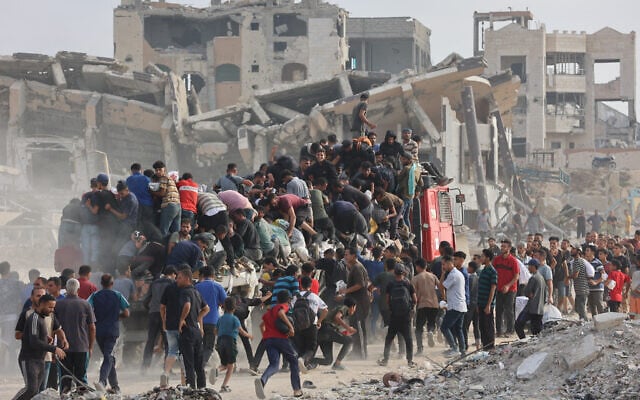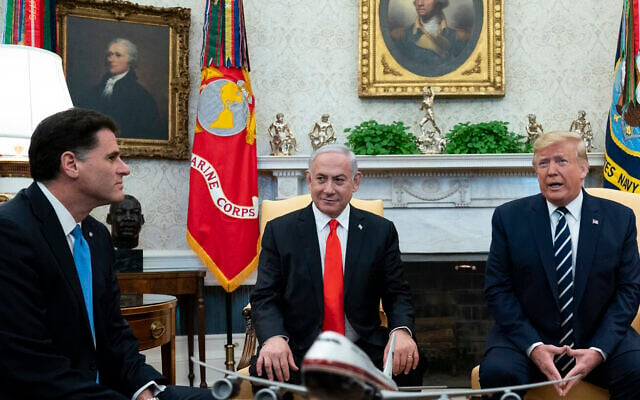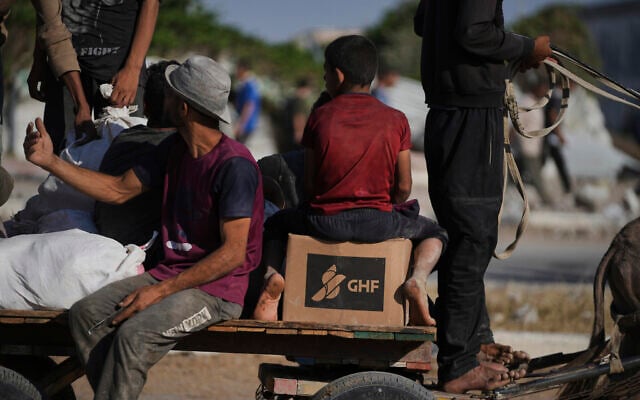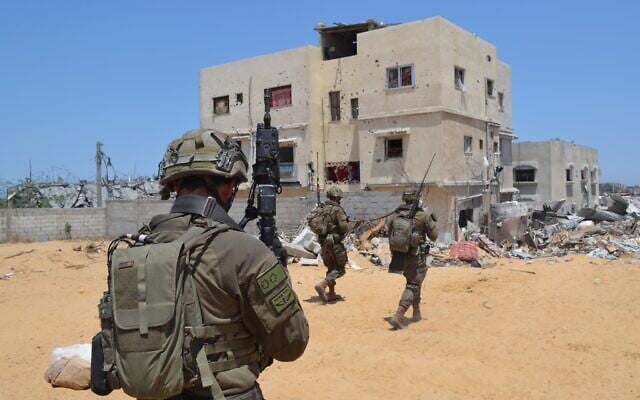


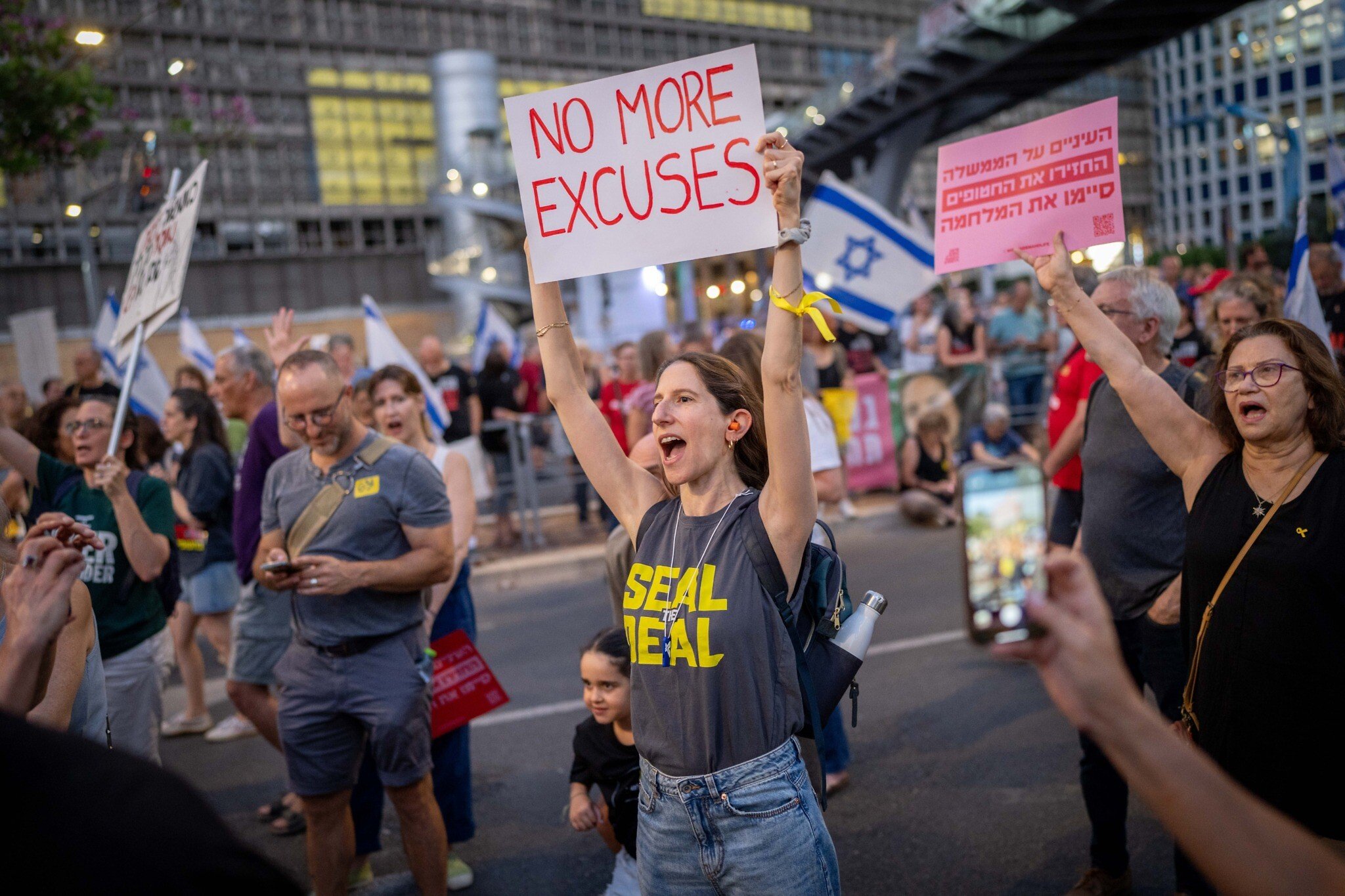
Despite the optimism expressed by the US administration regarding the prospects of reaching a Gaza ceasefire and hostage release deal within days, Israeli officials warned Saturday that there did not appear to be significant movement on the side of Hamas that would enable an agreement.
At the same time, reports purported to offer details on an up-to-date US-backed proposal for a 60-day halt to fighting in the Strip.
Media reports indicated that mediators Egypt and Qatar were optimistic about the chances for a deal and that US pressure on both sides was intensifying.
A key variable appeared to be a planned visit to the US by Israel’s Strategic Affairs Minister Ron Dermer, a top confidant of Prime Minister Benjamin Netanyahu, for talks about efforts for a regional deal that could potentially include an end to the war and an expansion of the Abraham Accords.
US officials were set to tell Dermer that the war must end and the remaining hostages should be returned, and that eliminating Hamas can wait for a future opportunity, Haaretz reported, citing two unnamed sources who spoke recently to a senior White House official.
Dermer’s trip was also intended as preparation for a visit by Netanyahu to Washington that was expected to take place within the next two weeks. US sources speaking to Channel 12 news said the administration wanted a deal clinched before Netanyahu’s trip.
Israeli officials cited by the network and by the Axios news site denied that there was any breakthrough in negotiations between Israel and Hamas, saying there was no meaningful shift in the sides’ stances on the key points of contention, including the terror group’s demand for guarantees that the war in Gaza will end.
Officials speaking anonymously to Channel 12 said there were no signs of Hamas flexibility. Israel says it has already agreed to US envoy Steve Witkoff’s proposal for a ceasefire, and that it is Hamas that is holding up a deal with unreasonable demands, the report said.
Sources cited by Haaretz said both the Palestinian terror group and Israel were refusing to budge, with Jerusalem insisting on the disarmament of Hamas, the exiling of its leaders, and the implementation of US President Donald Trump’s plan to relocate some of Gaza’s population outside the Strip.
Hamas sources quoted by the Saudi-owned, London-based Asharq Al-Awsat outlet said current negotiations might be the most serious to date due to the intense US pressure to reach a deal, but talks could take two or three weeks. The sources claimed the problem was the lack of “serious” intent by Israel to reach a deal.
Kan news reported that mediators Egypt and Qatar believe a breakthrough is possible, quoting sources in Cairo who said the White House had signaled that Trump intends to pressure Netanyahu and present a plan for ending the war.
Trump said Friday that he thought a ceasefire would be reached in Gaza “within the next week.”
Meanwhile, Channel 12 said IDF Chief of Staff Brig. Gen. Eyal Zamir was set to present options to the cabinet in the coming days for continuing operations in Gaza and would await a decision on how to proceed. One option was the IDF taking full control of the Strip and enacting military rule there, if a deal is not reached.
Another report by Channel 13 news cited unnamed IDF officials as saying the army was conveying to the government that after some 19 months of ground operations in Gaza, no significant goals remain that are achievable without risking the lives of the remaining hostages.
Terror groups in the Gaza Strip are still holding 50 hostages. They include the bodies of at least 28 confirmed dead by the IDF. Twenty are believed to be alive and there are grave concerns for the well-being of two others, Israeli officials have said.
The outlet reported that Netanyahu was set to hold a meeting Sunday at the IDF’s Southern Command, attended by Zamir, Defense Minister Israel Katz and a small group of ministers. The discussion was reportedly expected to focus on the continuation of the ground offensive.
An Arab official involved in the talks was cited by the Israel Hayom outlet as saying mediators have indicated to Hamas that now that Israel’s war with Iran is over, absent a deal in Gaza, Jerusalem was set to unleash its full might against Hamas without any restrictions.
While the US was said to be aiming for a comprehensive deal to end the war, several reports indicated that the main option on the table was an amended version of what Israel has termed the “Witkoff proposal,” which envisions a staggered release of around half of the living and half of the dead hostages during a 60-day ceasefire, alongside negotiations for a permanent end to the war.
Hamas has objected to this, demanding an upfront commitment by Israel not to renew the fighting — a demand rejected by Jerusalem.
Saudi channel Asharq News quoted sources involved in the negotiations as saying Washington has proposed an updated version of the Witkoff proposal that tries to tackle this issue, adding a new clause saying the truce will go on “as long as negotiations are held in good faith.” The report said Hamas opposes this formulation, arguing it allows Israel to renew the fighting at any time.
The Saudi report also said talks are complicated by Israel’s demand that humanitarian aid to Gaza continue to be managed by the controversial Gaza Humanitarian Foundation (GHF), while Hamas demands distribution by international organizations. GHF has been marred by near-daily mass casualty incidents in which the IDF has been accused of opening fire at Palestinians trying to reach distribution sites.
A second issue is Israel demanding that IDF forces remain in their current positions throughout the 60 days of ceasefire, while Hamas insists on their withdrawal to the positions they held during the previous truce, which fell apart in March.
Israel Hayom, citing three sources involved in the negotiations, reported that according to the up-to-date proposal, 10 living captives and the bodies of 15 abductees would be freed by Hamas, mostly in the first days of the truce, with the timing of the release of the rest a matter for debate.
Palestinian security prisoners would be released by Israel in numbers similar to those seen in previous exchanges, according to the report. Hamas would give full details regarding the conditions of the remaining hostages and provide them with food and medical treatment. Israel is demanding visits by the Red Cross.
The flow of humanitarian aid would expand, with Israel demanding international monitoring to ensure Hamas doesn’t steal the aid — though the demand is likely impossible to meet. The report said GHF would continue handing out goods in its centers, and that IDF troops would gradually and partially withdraw in accordance with progress in talks for a permanent agreement.
The report said Trump himself would say publicly that the truce would continue after the 60 days, even if negotiations aren’t complete. The release of further hostages would also be required to continue as long as talks are held.
Regarding the second and final stage set to end the war, Israel Hayom reported that all proposals envision Gaza being managed by a multinational force including Arab, American and other officials, which would take control of policing and security — though this would only be possible after Hamas is disarmed. There were said to be multiple proposals regarding how exactly to go about this, and how to deal with remaining tunnels, with the terror group refusing to agree on a roadmap.
Israel launched its campaign in Gaza following the October 7, 2023, Hamas assault on southern Israel, in which some 1,200 people were killed and 251 were taken hostage.
The Hamas-run Gaza health ministry says more than 56,000 people in the Strip have been killed or are presumed dead in the fighting so far, though the toll cannot be verified and does not differentiate between civilians and fighters. Israel says it has killed some 20,000 combatants in battle as of January and another 1,600 terrorists inside Israel during the October 7 onslaught.
Israel has said it seeks to minimize civilian fatalities and stresses that Hamas uses Gaza’s civilians as human shields, fighting from civilian areas, including homes, hospitals, schools and mosques.
Jacob Magid contributed to this report.

